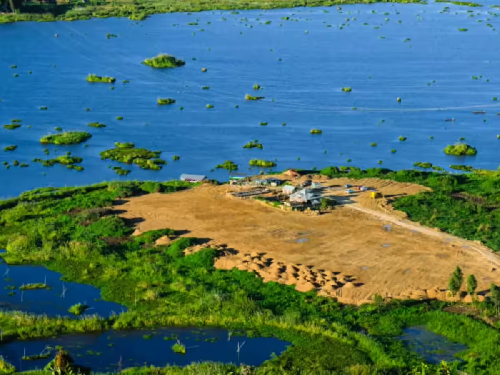The Keibul Lamjao National Park in Manipur, the world’s only floating national park, is once again drawing global attention for its unique ecosystem and critical conservation efforts. This extraordinary protected area, situated in the southeastern part of the massive Loktak Lake, is renowned for its distinctive floating landmasses, locally known as phumdis.
The park is the last natural refuge of the critically endangered Sangai ($\textit{Rucervus eldii eldii}$), or Manipur brow-antlered deer. Endemic to this region, the Sangai is often called the “dancing deer” due to its delicate gait as it navigates the precarious, spongy surface of the phumdis .
Conservationists have hailed the recent census figures, which show a modest but encouraging increase in the Sangai population, a testament to the stringent protection measures implemented by the Forest Department and local communities. “Protecting the Sangai means protecting the entire fragile habitat of Keibul Lamjao,” stated Dr. L. Meitei, a leading conservation biologist working in the region.
The defining feature of Keibul Lamjao is the phumdis, a fascinating phenomenon of heterogeneous mass of vegetation, soil, and organic matter that floats on the lake’s surface. These mats are in various stages of decomposition and can be quite thick, supporting the weight of large animals and the local fishing community’s huts.
However, the park faces significant environmental challenges. Fluctuations in the water level of Loktak Lake, largely attributed to the nearby Ithai Barrage, and the encroachment of human activity pose continuous threats to the stability and integrity of the phumdis. When the water level is too low, the floating mats don’t receive enough water to keep them buoyant, causing them to sink and potentially collapse, jeopardizing the Sangai’s grazing ground.
Local residents, who have historically relied on Loktak Lake for their livelihood, are increasingly being integrated into conservation efforts. Eco-tourism initiatives are being carefully developed to provide sustainable income while raising awareness about the park’s fragile nature.
“Keibul Lamjao is more than just a park; it’s a living, breathing natural marvel,” remarked the Chief Minister of Manipur during a recent visit. “It is a national treasure and a global ecological curiosity that we must protect for future generations.” The state government, in collaboration with national and international environmental bodies, is working on a long-term plan to regulate water management and mitigate the negative impacts of infrastructure projects on this unique floating sanctuary.






